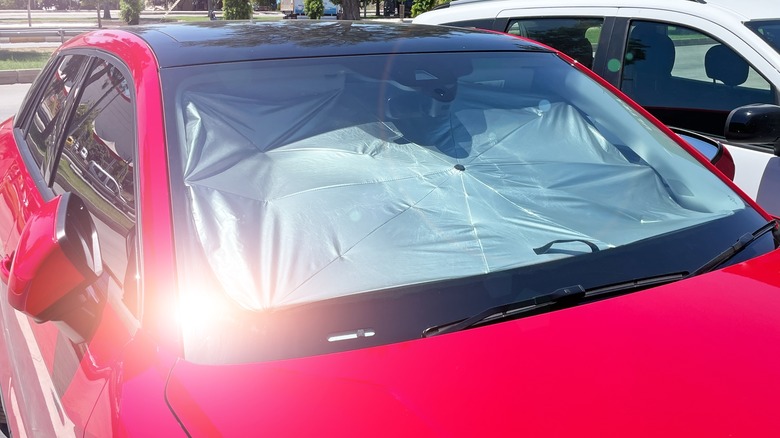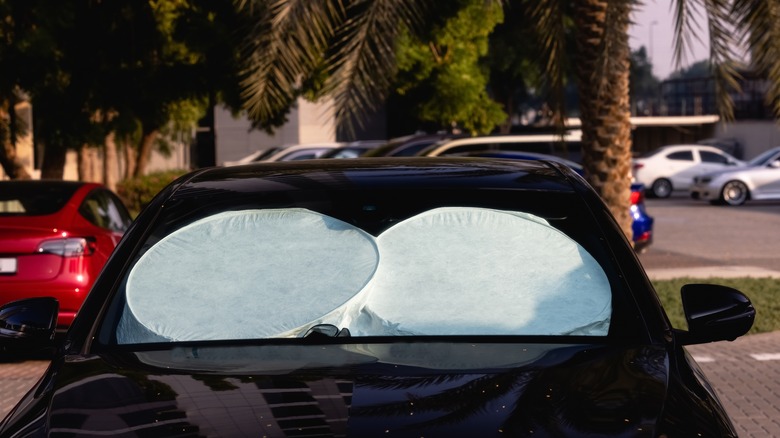Car Sun Shades: Which Side Should Face Out Toward The Sun?
Using a sunshade when parking under direct sunlight is easy, cost-effective, and proven to beat the heat while preserving your car's interior. Now that summers are getting hotter and record-breaking heat is sweeping worldwide, blocking the sun's harmful rays with a windshield sunshade could significantly lower in-cabin temperatures without modifying your ride.
According to a report by the U.S. National Oceanic and Atmospheric Administration, average temperatures reached 71.8 degrees Fahrenheit across the country, making June 2024 the second warmest month in the past 130 years. Moreover, extreme heat increases the chances of children and pets dying inside hot cars, and something uncomplicated like a sunshade could somehow mitigate that risk.
The temperature inside your vehicle's cabin could rise to 105 degrees Fahrenheit in under an hour when the outside temperature is 61 degrees. But in 90-degree weather, the dashboard and steering wheel could reach 170 and 155 degrees Fahrenheit after just 45 minutes of sun exposure. However, with a sunshade in the windshield, the temperature could drop to 110 and 122 degrees Fahrenheit, respectively.
Which side of the shade should face the sun?
The answer depends on the type of sunshade, but most will have two sides: a shiny, reflective part and a fabric-like material. The shiny side should deflect heat and face the sun's direction when installed in the windshield. Meanwhile, the printed side should face outwards for sunshades with fancy designs, images, or corporate logos.
Doing it the other way around will have the opposite effect. If the shiny side faces inwards, the fabric side will absorb heat and make the interior hotter. But then again, placing the sunshade with the shiny side facing inward will benefit your vehicle in the wintertime.
If the outside temperature is minus 19 degrees Fahrenheit, the car interior will register a toasty 50 degrees in just 20 minutes with a sunshade. Without it, the temperature could drop to 34 degrees, making melting ice or frost in the glass more challenging while waiting for your war to warm up. As it turns out, sunshades offer year-round, all-weather benefits when used correctly.

